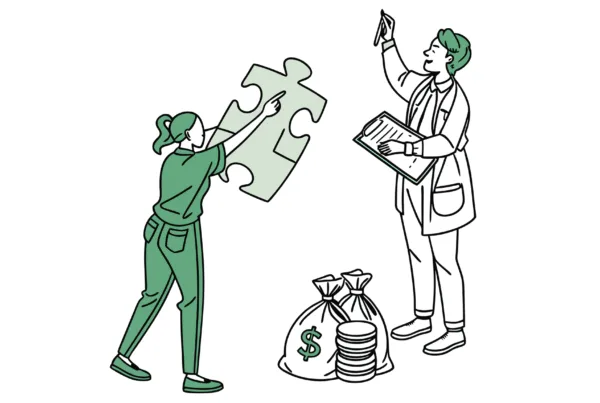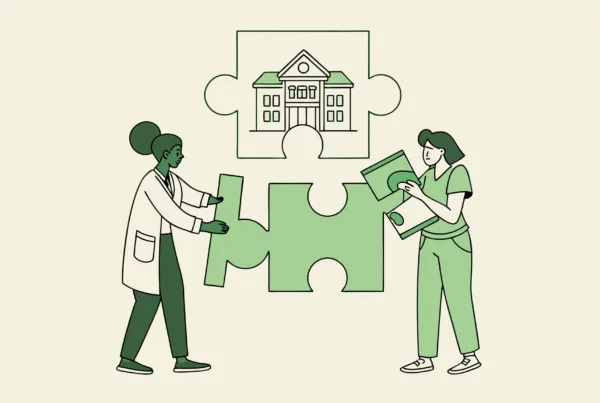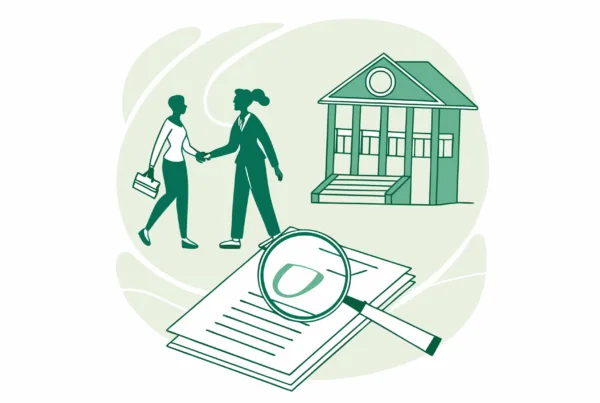Selling your Outpatient Physical Therapy practice is one of the most significant financial decisions you will ever make. For owners in New Jersey, the current landscape presents a unique mix of opportunity and complexity. This guide provides a straightforward look at the market, key valuation drivers, and the sale process, helping you understand how to prepare for a successful transition and maximize your return. The right preparation is key.
A Market Poised for Growth
The New Jersey outpatient physical therapy market is not just stable. It is large and growing. We see a robust environment for practice owners who are considering their next steps. This provides a strong backdrop for a potential sale, but it also means buyers are more sophisticated than ever.
Understanding the scale of your local market is the first step. Here are the key numbers for New Jersey:
- Market Size: The industry is projected to hit $2.5 billion.
- Practice Count: There are nearly 6,800 other PT businesses in the state.
- Active Acquirers: Large networks like Ivy Rehab and Professional Physical Therapy are consistently buying practices, which signals a healthy M&A climate.
This level of activity means there are buyers, but it also means you need to be well-prepared to stand out.
Two Things to Address Before You Sell
Beyond the market numbers, your practice’s success in a sale depends on its internal structure and performance. For New Jersey PT owners, two areas are particularly important.
Navigating Ownership Rules
New Jersey has a strict “Corporate Practice of Medicine” doctrine. This rule generally prohibits non-licensed individuals or entities from owning a physical therapy practice. This has significant implications for who can buy your practice and how the deal must be structured. It’s a legal hurdle that can kill a deal if not planned for correctly from the very beginning. You need a structure that protects you and satisfies the buyer within these legal bounds.
Proving Operational Strength
Sophisticated buyers look past your revenue and at your operational efficiency. They will analyze your key performance indicators (KPIs). You should know your numbers cold.
* What is your denial rate? (The state average is around 8%).
* What is your average reimbursement per visit? (It can range from $78 to over $111).
* How long does it take your staff to complete documentation?
Having clean, strong metrics proves your practice is a well-run business, not just a job for its owner. This makes it more valuable to a buyer.
Consolidation is Creating Opportunity
The biggest trend in the New Jersey physical therapy space is consolidation. Large, private equity-backed groups and established regional networks are actively looking to acquire well-run independent practices. They see the value in established patient bases, skilled staff, and strong local reputations. We have seen multi-location practices with revenues over $500,000 successfully sell in this environment.
This trend can feel intimidating, but it is actually a major opportunity for you as a seller. These groups are strategic buyers. They have capital and are often more efficient, meaning they can pay a premium for a practice that fits their growth plans. The key is to create a competitive process where multiple buyers are interested in your practice. This is how you ensure you get the best possible terms, not just the first offer that comes along.
Understanding the Path to a Sale
Selling your practice is a structured process, not a single event. Many owners think about selling only when they are ready to exit, but the most successful sales are planned years in advance. Preparing now ensures you are selling on your terms, not a buyer’s.
Here is a simplified look at the path from decision to closing.
| Stage | What It Means for You |
|---|---|
| 1. Preparation | This is where you clean up your financials, organize contracts, and craft the story of your practice’s growth potential. This phase alone can take 6-12 months. |
| 2. Valuation | An expert assesses your practice’s worth based on financials, market conditions, and strategic value. This sets a realistic price range. |
| 3. Marketing | Your advisor confidentially approaches a curated list of qualified buyers to create interest and competitive tension without your staff or patients knowing. |
| 4. Due Diligence | The chosen buyer inspects every aspect of your business, from finances to legal compliance. Being prepared here is critical to prevent issues. |
| 5. Closing | Final legal documents are signed, funds are transferred, and you officially transition the practice to its new owner. |
How Your Practice is Valued
A practice’s value is more than just its revenue. Professional buyers primarily use a multiple of your cash flow to determine their offer. The two most common methods are based on:
1. Adjusted SDE (Seller s Discretionary Earnings): This is your net profit plus your own salary, benefits, and any one-time expenses. For most practices, a multiple of 2.5x to 4.0x is applied.
2. Adjusted EBITDA (Earnings Before Interest, Taxes, Depreciation, and Amortization): This is used for larger practices. It normalizes your earnings to show the true operational profitability. Multiples for practices with under $1M in EBITDA often range from 3.0x to 5.0x.
The multiple a buyer is willing to pay depends on your practice’s specific strengths. Buyers pay a premium for practices that are less risky and have clear growth potential. Key value drivers include having a tenured staff committed to staying, multiple revenue streams (like massage or orthotics), and modern, well-maintained equipment.
Planning for Life After the Sale
The deal is not done when the papers are signed. A successful transition is critical for your legacy, your staff, and your final payout. Thinking about the post-sale period beforehand is one of the most overlooked parts of the process.
Defining Your New Role
Most buyers will want you to stay on for a transition period, typically 1 to 3 years. Your role during this time is negotiable. Do you want to continue treating patients full-time, or shift to a part-time mentorship role? Defining this upfront ensures there are no surprises and your responsibilities align with your personal goals. This period is often tied to an “earnout,” where a portion of the sale price is paid out if the practice hits certain performance targets after the sale.
Structuring Your Financial Future
The structure of your sale has massive implications for your after-tax proceeds. You might receive all your money at closing, or you might take part of the payment in the form of equity in the new, larger company (an “equity rollover”). A rollover can provide a “second bite at the apple,” giving you a potentially significant payday when the larger group sells again in the future. Planning this with an expert ensures your financial future is secure.
Frequently Asked Questions
What is the current market size and competitive landscape for outpatient physical therapy practices in New Jersey?
The New Jersey outpatient physical therapy market is large and growing, projected to reach $2.5 billion with nearly 6,800 practices. Active acquirers like Ivy Rehab and Professional Physical Therapy are consistently buying practices, indicating a robust M&A climate.
What legal considerations regarding ownership should I be aware of when selling my outpatient physical therapy practice in New Jersey?
New Jersey enforces a strict “Corporate Practice of Medicine” doctrine, which generally prohibits non-licensed individuals or entities from owning a physical therapy practice. This legal rule affects who can buy your practice and how the deal must be structured, making it crucial to have a compliant structure from the start.
How do buyers typically value an outpatient physical therapy practice in New Jersey?
Buyers primarily use a multiple of cash flow to value practices. The most common methods are adjusted Seller’s Discretionary Earnings (SDE) with multiples from 2.5x to 4.0x for most practices and adjusted EBITDA for larger practices, with multiples ranging from 3.0x to 5.0x. Value drivers include staff tenure, diverse revenue streams, and modern equipment.
What steps should I take to prepare my practice for a successful sale?
Preparation involves cleaning up financials, organizing contracts, and crafting your practice’s growth story, which can take 6-12 months. You should also know your operational metrics like denial rates, reimbursement per visit, and documentation efficiency to demonstrate operational strength to buyers.
What happens after I sell my outpatient physical therapy practice in New Jersey?
After the sale, a transition period is typically negotiated where you may stay on part-time or full-time for 1-3 years to ensure a smooth handover. Financial structuring of the sale, like receiving payment at closing or an equity rollover, impacts your after-tax proceeds and future earnings potential.



